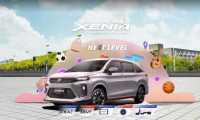Jl. Inspeksi Saluran Kalimalang Kav Agraria No.15 Duren Sawit Jakarta Timur
How Symbols Shape Our Perception of Rhythm and Motion
Symbols are fundamental to human cognition, acting as visual or conceptual representations that encapsulate complex ideas, emotions, and cultural narratives. They serve as cognitive shortcuts, enabling us to interpret and respond to our environment swiftly. From ancient cave paintings to digital icons, symbols influence how we perceive dynamic experiences, especially those involving rhythm and motion. Understanding this influence reveals how deeply intertwined our perception of movement is with symbolic meaning, shaping our cultural interactions and aesthetic judgments.
Table of Contents
- 1. Theoretical Foundations: How Symbols Convey Meaning and Movement
- 2. Visual Cues and Perception: The Impact of Color, Shape, and Layout
- 3. Symbols and Cultural Narratives: Embedding Rhythm and Motion in Traditions
- 4. Case Study: Pinateros as Modern Symbols of Rhythm and Motion
- 5. Non-Obvious Dimensions: The Subconscious Influence of Symbols on Perceived Motion
- 6. Practical Applications: Designing Visual and Cultural Symbols to Enhance Perception of Rhythm and Motion
- 7. Conclusion: The Interwoven Role of Symbols in Crafting Our Perception of Dynamic Experiences
1. Theoretical Foundations: How Symbols Convey Meaning and Movement
Semiotics, the study of signs and symbols, explains how visual language communicates complex ideas through simple representations. For example, a lightning bolt symbol often signifies speed or energy, instantly conveying a sense of rapid motion. Cognitive psychology further reveals that our brains create mental mappings between symbols and concepts like movement or rhythm. For instance, curved lines can evoke a sense of fluidity, while sharp angles suggest abrupt, dynamic motion. Moreover, cultural symbols—such as traditional dance motifs or religious icons—shape collective perceptions by embedding specific rhythmic patterns and motion cues that resonate within communities.
Key Point:
Symbols function as cognitive and cultural anchors, allowing us to interpret and anticipate movement based on their visual and contextual cues.
2. Visual Cues and Perception: The Impact of Color, Shape, and Layout
Visual elements significantly influence how we perceive rhythm and motion. Color schemes, for example, play a vital role; a turquoise background with warm accents like red or orange can create a vibrant sense of energy and movement. The psychology behind color suggests that warm hues evoke excitement and dynamism, while cooler tones offer calmness, but when combined thoughtfully, they amplify the perception of motion. Spatial arrangements—such as grid completions or directional lines—serve as rhythmic cues, guiding the viewer’s eye along a perceived flow or tempo. For instance, a repetitive pattern of vertical lines can simulate a heartbeat or marching rhythm, reinforcing the sense of movement within a static image.
Design elements such as layout and shape also contribute to this perception. Asymmetrical compositions can suggest instability or action, whereas symmetrical layouts tend to feel stable and static. The strategic use of these cues creates a visual ‘beat’ that the viewer subconsciously follows, enhancing their experience of rhythm.
3. Symbols and Cultural Narratives: Embedding Rhythm and Motion in Traditions
Cultural artifacts often encapsulate rhythmic patterns and motion symbolism. A prime example is the piñata, traditionally filled with sweets and toys, which symbolizes celebration and lively movement. During festivities, the act of hitting a piñata is inherently rhythmic—each strike aligned with musical beats—creating a collective sense of motion and joy. Similarly, traditional dances—such as flamenco or African drumming—embed specific rhythmic patterns that are culturally embedded symbols of vitality and communal cohesion.
Modern reinterpretations maintain these symbolic meanings. For example, contemporary street art or visual branding may incorporate motifs that evoke energy and motion, reinforcing cultural narratives of dynamism and celebration. These symbols serve not only as aesthetic elements but also as carriers of collective memory and identity.
4. Case Study: Pinateros as Modern Symbols of Rhythm and Motion
The BRUV ??? exemplifies how timeless principles of symbolism manifest in modern contexts. Pinateros, the traditional piñata makers, have evolved into symbols of joy, community, and kinetic energy. Their craft and the act of breaking a piñata evoke a vivid imagery of movement—both physical and emotional.
Visually, piñatas are colorful, often in exaggerated shapes—stars, animals, or fantasy figures—designed to catch attention and suggest motion. The act of hitting and breaking the piñata creates a rhythmic sequence, driven by anticipation and sudden bursts of movement, which is psychologically linked to excitement and celebration. These symbols reinforce the perception of rhythm and flow, engaging audiences and emphasizing the collective experience of joy and motion.
5. Non-Obvious Dimensions: The Subconscious Influence of Symbols on Perceived Motion
Research shows that subtle visual cues, such as background colors and layout, can prime viewers’ perception of movement. For example, a background with multipliers or grid patterns that are nearly complete can subconsciously suggest continuity and rhythm, even without explicit motion cues. This priming effect influences how viewers interpret static images, making them feel more dynamic.
Furthermore, subliminal cues—like the directionality of shapes or the placement of visual elements—interact with explicit symbols to shape our perception of motion. Studies in visual psychology demonstrate that our brains process these cues automatically, forming impressions of rhythm and flow that enhance engagement and emotional response.
6. Practical Applications: Designing Visual and Cultural Symbols to Enhance Perception of Rhythm and Motion
Designers and educators can harness these insights by intentionally choosing colors, shapes, and layouts that evoke movement. For example, using vibrant, contrasting colors can stimulate energy, while dynamic shapes like spirals or zigzags can suggest motion. Arranging elements in a sequence that guides the viewer’s eye along a specific path reinforces perceived rhythm.
Incorporating cultural symbols, such as piñatas or traditional dance motifs, into visual narratives communicates dynamism and celebration effectively. These symbols serve as powerful cues that evoke collective memories and emotional responses, enhancing engagement. As virtual and augmented reality technologies advance, integrating symbolic cues can create immersive rhythm experiences—making digital interactions more vivid and emotionally resonant.
For example, VR environments that simulate a festival scene with animated symbols and rhythmic sounds can deeply engage users, leveraging cultural and visual cues to produce a sense of motion and energy.
7. Conclusion: The Interwoven Role of Symbols in Crafting Our Perception of Dynamic Experiences
Symbols are not merely decorative or communicative; they actively shape how we perceive movement, rhythm, and energy. Whether through cultural artifacts like piñatas or modern visual design, symbols embed rhythmic patterns and motion cues that our subconscious readily interprets. Recognizing this allows creators and educators to craft more engaging, meaningful experiences that resonate on both conscious and subconscious levels.
“Understanding the subtle power of symbols transforms how we design and interpret the visual world, making experiences more immersive and emotionally impactful.”
In sum, intentional symbolism enhances our interaction with visual and cultural narratives, enriching our perception of rhythm and motion in everyday life. By studying and applying these principles, we deepen our engagement with the dynamic experiences that define human culture and creativity.

Mastering Micro-Targeted Personalization in Email Campaigns: From Data Infrastructure to Dynamic Content
Implementing micro-targeted personalization in email marketing is a complex yet highly rewarding process that transforms generic campaigns into highly relevant customer experiences. This deep-dive explores the nuanced technical strategies and practical steps needed to achieve precise, scalable personalization. Drawing from... selengkapnya

Топ 10 Лучших Онлайн Казино На Деньги в России 2025 Рейтинг Лицензионных
список Онлайн-казино И Бонусов 2025 Content Мобильное Казино Ggbet Онлайн-слоты — Топ Игры киромарусом Высоким Rtp Бездепозитные и Приветственные Бонусы и Рейтинговых Онлайн Казино На Деньги новой Онлайн Игры Отзывы Игроков ▶️ Сколько Разновидностей Покера Есть На Сайте Казино Ggbet?... selengkapnya
![{“detail”:[{“order”:1009,”description”:”Ошибка Записи Данных В БД”}]}](https://daihatsukalimalang-armada.com/wp-content/themes/wpdealer-dev/images/loop.jpg)
{“detail”:[{“order”:1009,”description”:”Ошибка Записи Данных В БД”}]}
{“detail”:[{“order”:1009,”description”:”Ошибка Записи Данных В БД”}]} Content {“detail”:[{“order”:1009,”description”:”Ошибка Записи Данных В БД”}]} {“detail”:[{“order”:1009,”description”:”Ошибка Записи Данных В БД”}]} {“detail”:[{“order”:1009,”description”:”Ошибка Записи Данных В БД”}]} {“detail”:[{“order”:1009,”description”:”Ошибка Записи Данных В БД”}]} {“detail”:[{“order”:1009,”description”:”Ошибка Записи Данных В БД”}]} {“detail”:[{“order”:1009,”description”:”Ошибка Записи Данных В БД”}]} {“detail”:[{“order”:1009,”description”:”Ошибка Записи Данных В... selengkapnya















 Users Today : 7
Users Today : 7 Users Yesterday : 22
Users Yesterday : 22 Total Users : 19052
Total Users : 19052 Views Today : 13
Views Today : 13 Views Yesterday : 26
Views Yesterday : 26 Total views : 32057
Total views : 32057
Belum ada komentar